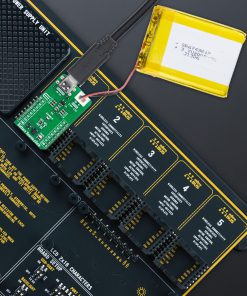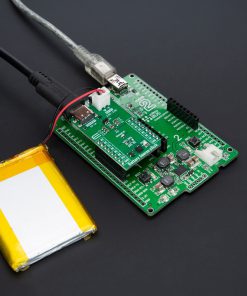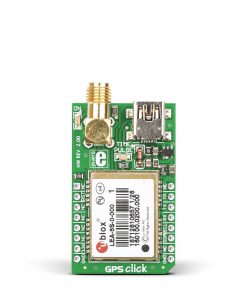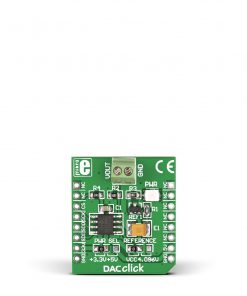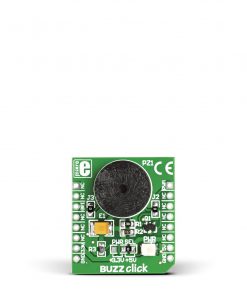Battery Source Click
R560.00 ex. VAT
Battery Source Click is a compact add-on board designed to boost power from a battery for portable applications. This board features the TPS81256, a high-efficiency step-up converter from Texas Instruments. The board boosts input voltage (2.5V to 5.5V) to 5V/1A on a USB Type-C connector. It operates at a 4MHz switching frequency, enters Power-Save mode at light loads, and reduces supply current to 43μA during light load operation. The board supports over 3W output power and has an input current of less than 1µA in shutdown mode, maximizing battery life. The output-enable function via the MAX40200 and a red LED indicator ensures easy control and monitoring. This Click board™ is ideal for low-power, battery-powered portable applications requiring efficient power management.
Battery Source Click is fully compatible with the mikroBUS™ socket and can be used on any host system supporting the mikroBUS™ standard. It comes with the mikroSDK open-source libraries, offering unparalleled flexibility for evaluation and customization. What sets this Click board™ apart is the groundbreaking ClickID feature, enabling your host system to seamlessly and automatically detect and identify this add-on board.
Stock: Lead-time applicable.
| 5+ | R532.00 |
| 10+ | R504.00 |
| 15+ | R476.00 |
| 20+ | R458.08 |












